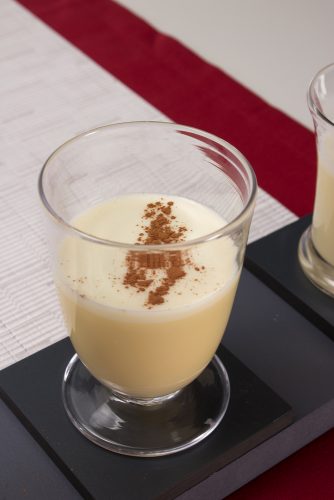The Story of Eggnog – 英会話・英語 アミック
2018/12/14
In anticipation of questions from my students about popular American Christmas traditions (and mostly because I don’t actually know), I wanted to scratch my own itch and ask and answer: what is eggnog and why is it so popular in America?

What it is: According to Wiki, eggnog is a rich, white beverage made from milk, cream, sugar, whipped egg whites, and egg yolks. Spices like cinnamon and nutmeg are often added as a topping. Many adults like to also add spirits like rum, brandy, or whisky to kick it up a notch. Some people make it at home, but it can also be found in any supermarket’s dairy section around Christmas time.
How it became a thing: The history of the word is disputed: some argue the name comes from a 17th century English word for beer (nog); others think it’s a slurring of ‘egg’ and ‘grog‘ (an old word for rum); while even more trace it to 18th-century America.
No matter its etymology, the drink itself was popular among Englands’s lower classes and eventually made its way to the Americas in the 18th century. Although today the drink comes alcohol-free by default (in stores, anyway), in early America the opposite was true and it contained whatever hard alcohol was available, including rum, whiskey, bourbon, and sherry. During the Christmas of 1826, heavy consumption of the drink even led to a literal eggnog riot at the U.S. Military Academy.
How Americans feel about it: Eggnog is a very polarizing beverage and many Americans have strong and nuanced opinions about it: some think the homemade version is heaven in a glass but despise the processed supermarket versions, while others will happily drink any variety as long as it’s ‘spiked’ with alcohol. Either way, there’s apparently enough of a market for the stuff that soy, coconut, and even tofu-based versions are now available.
Even if you pass on the drink itself, the beverage’s flavor can be hard to avoid: seeing nog-flavored treats like waffles, ice cream, and cookies isn’t uncommon, making egg nog’s presence around the holidays almost as ubiquitous as cinnamon and peppermint’s.












